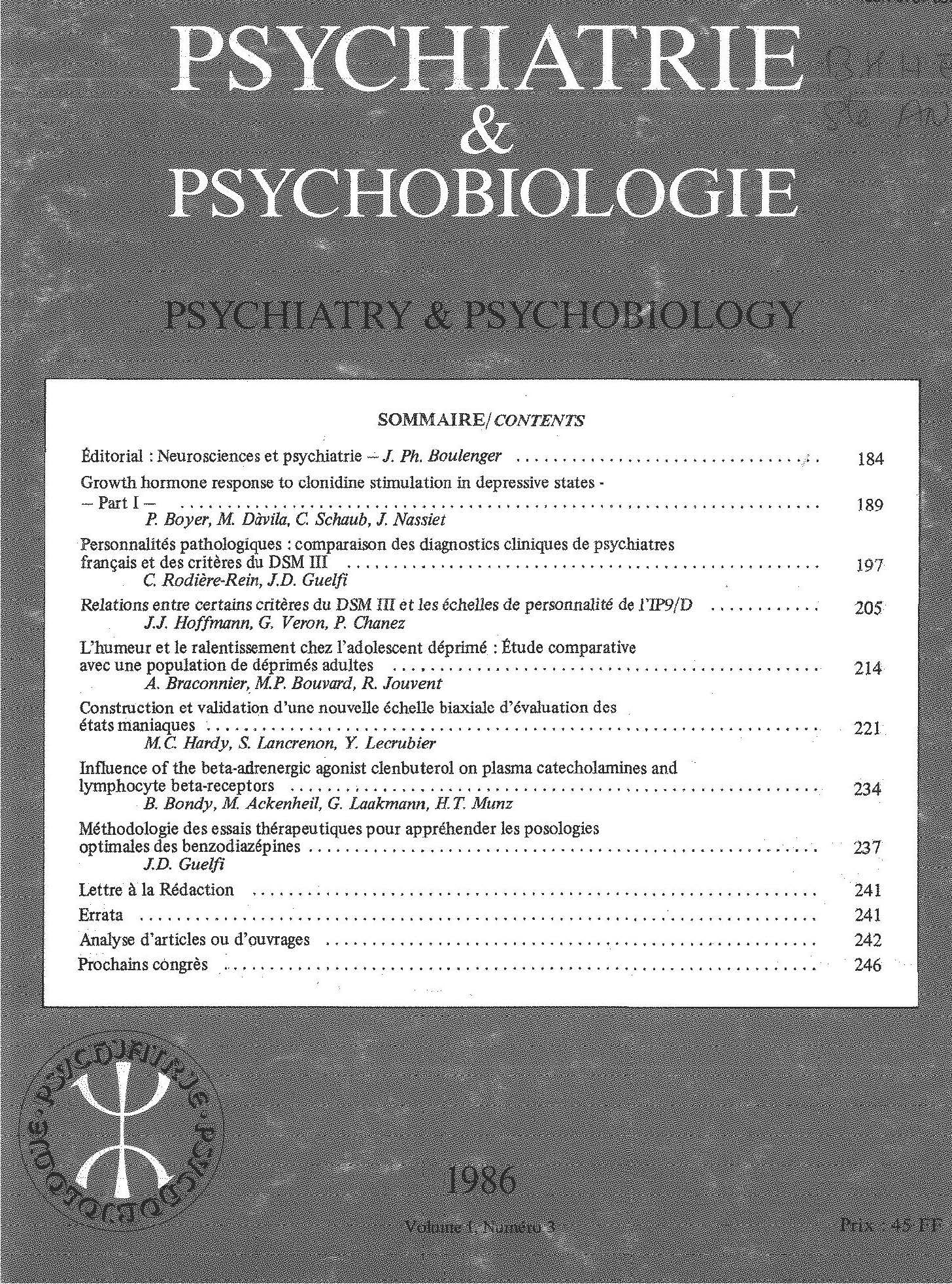Article contents
Sérotonine et capacité à différer une conduite un modèle psychobiologique
Published online by Cambridge University Press: 28 April 2020
Résumé
Des troubles du fonctionnement sérotoninergique ont été impliqués dans de nombreuses pathologies ou dysrégulations du système nerveux central: trouble dépressif, trouble anxieux, schizophrénie, psychopathie, agressivité, boulimie, éthylisme, etc.
Le rôle de cette amine dans l’inhibition de la survenue de certains comportements est décrit depuis longtemps. Chez l’animal, ce rôle semble organiser la capacité à différer une conduite et/ou à tolérer sans réponse comportementale une situation de contrainte. Chez l’homme, la sérotonine semble réguler une capacité à contrôler les réponses impulsives dans le cadre des troubles très différents tels que passage à l’acte suicidaire, conduite boulimique, compulsions itératives, conduite éthylique, etc. Les inhibiteurs du recaptage de la sérotonine semblent améliorer l’existence de ces troubles de façon transnosologique.
Nous faisons l’hypothèse que certains diagnostics pourraient être la conséquence d’un fonctionnement «limite» sur le plan biologique facilitant le passage à l’acte et des troubles de personnalité. Aucune des deux dimensions ne serait en soi pathologique. Le manque d’adaptabilité de certains fonctionnements mentaux (caractère, personnalité) ajoutée à un fonctionnement biologique «limite” (difficulté à différer sa réponse) seraient par leur coexistence responsables de la décompensation qui aboutit à ce qu’on appelle un diagnostic.
Summary
Serotoninergic function disorders have been implicated in numerous central nervous System pathologies or dysregulations: depressive or anxious disorders, schizophrenia, psychopathy, aggressivity, bulimia, alcoholisrn, etc.
The role of this amine in inhibiting the onset of certain behaviors was described long ago. In the animal, this rote seems to organize the capacity to delay a given conduct and/or tolerate a constraining condition without a behavioral response. In man, serotonin seems to regulate the capacity to control impulsive responses in the context of very different disorders sucli as passage to the suicidal act, bulimic conduct, iterative compulsions, alcoholisrn, etc. The inhibitors of serotonin reuptake seem to improve the existence of these disorders in a transnosological manner.
We propose that certain diagnoses may be the consequence of «limit» functioning at the biological level (facilitating passage to the act), in addition to personality disorders. While neither dimension seems to be intrinsically pathological, the decompensation resulting in what is called a diagnosis is apparently due to a coexisting lack of adaptability of certain mental functions (character, personality), added to «limit» biological functioning (difficulty to defer response).
Keywords
- Type
- Research Article
- Information
- Copyright
- Copyright © European Psychiatric Association 1998
References
Références
- 10
- Cited by



Comments
No Comments have been published for this article.